How Chat Integrations Are Enhancing Multimodal Interactions
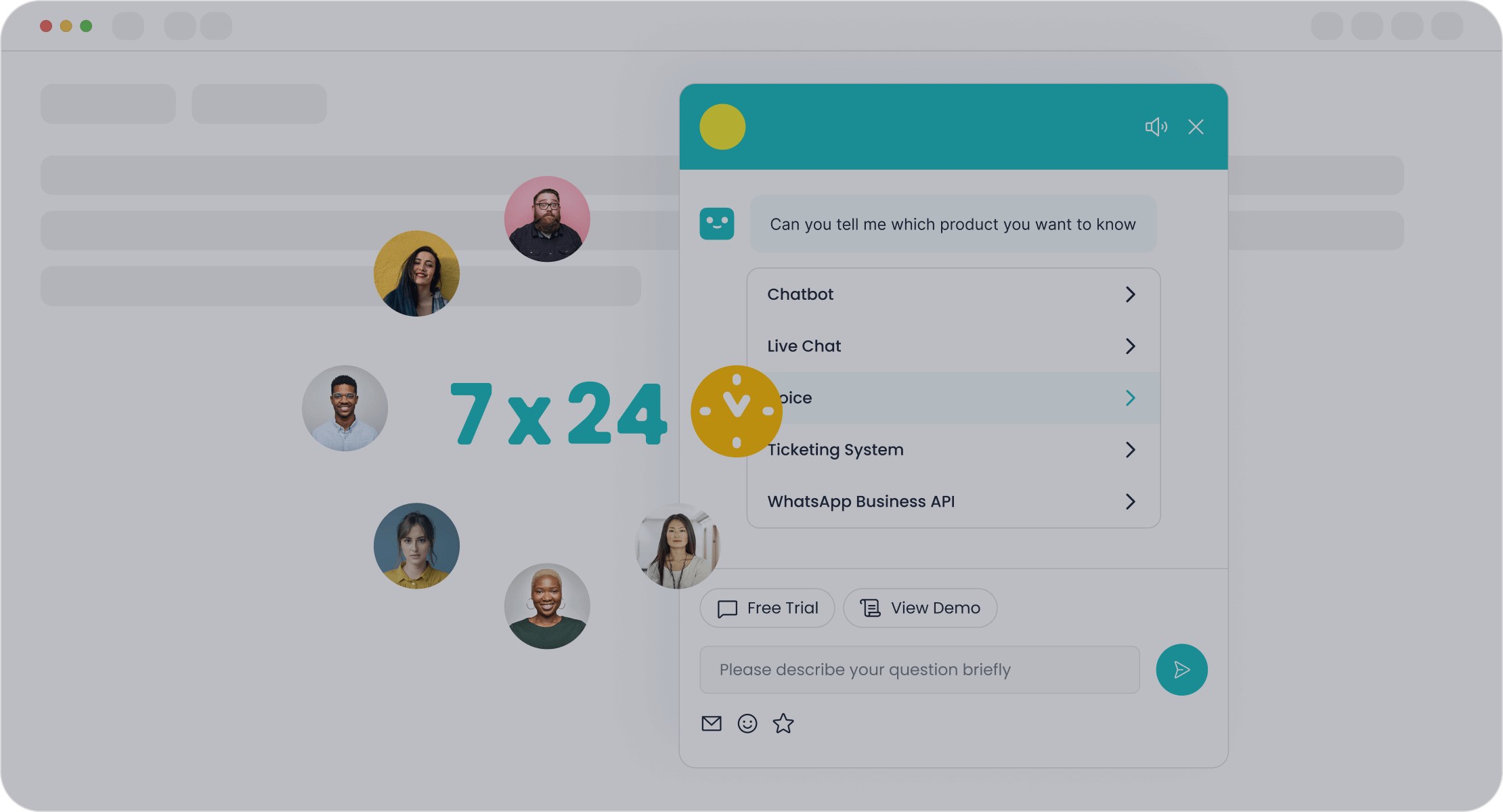
Multimodal interactions combine text, voice, gestures, and visuals to create more dynamic communication. Studies show that multimodal communication enhances efficiency, outperforming unimodal signals. This approach is crucial in industries like customer service, where seamless exchanges improve the customer experience.
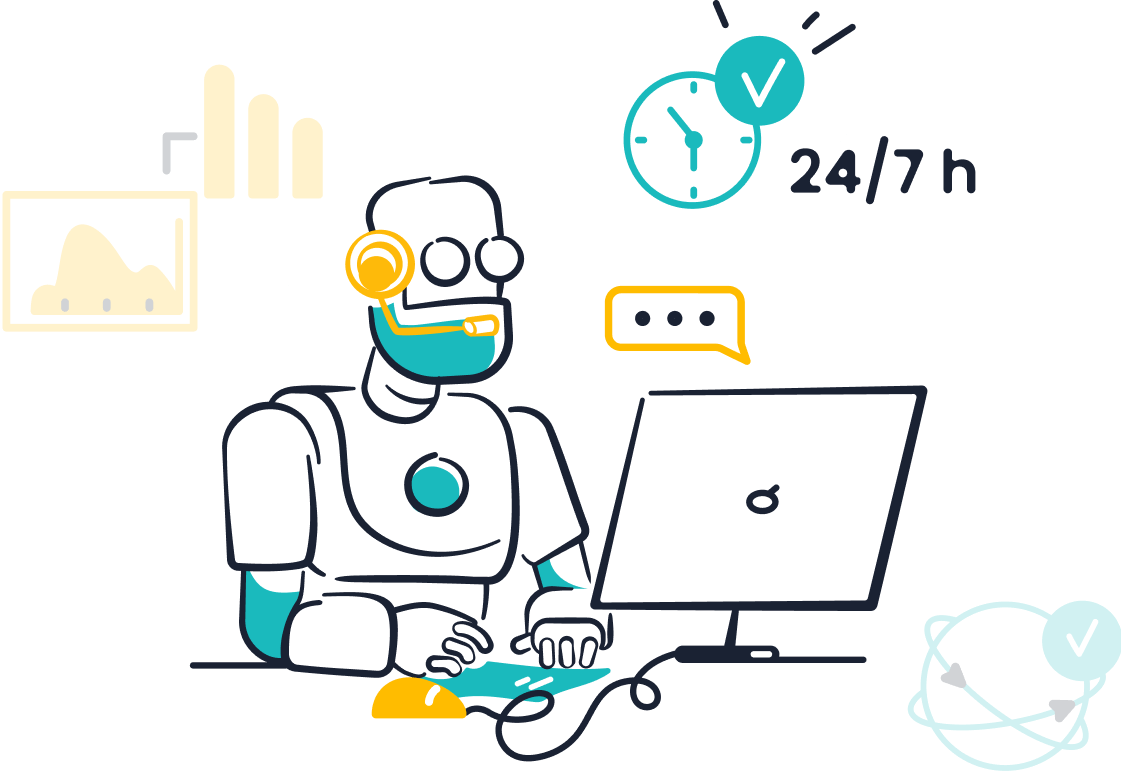
Chat integrations, such as Sobot's AI Chatbot, are transforming these interactions. Sobot's chatbot handles queries autonomously and operates 24/7, making customer support faster and more efficient. With 52% of U.S. customers switching providers due to poor service, businesses need user-friendly tools to meet rising demands. Advanced AI solutions not only enhance customer satisfaction but also reduce operational costs, ensuring businesses stay competitive.
What Are Multimodal Interactions?
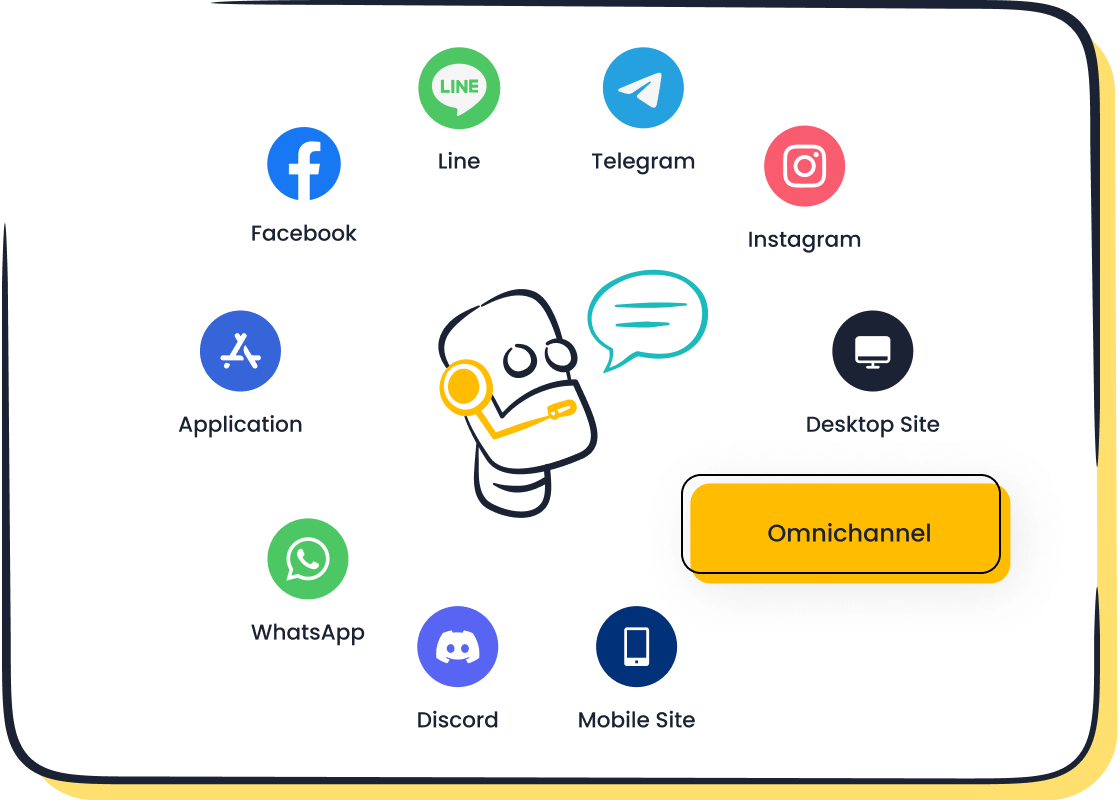
Definition and Key Features
Multimodal interactions let you communicate naturally with virtual and physical environments using multiple sensory inputs. These interactions combine speech, handwriting, gestures, and gaze as input modalities, while output modalities include speech synthesis and smart graphics. The process of multimodal fusion interprets combined inputs, making communication seamless and intuitive.
Multimodal interfaces enhance usability by offering diverse interaction modes, especially for users with impairments. For example, cloud computing plays a vital role in managing the complexity of these interactions by providing scalable resources. This flexibility makes multimodal systems ideal for improving conversational user experiences across mobile devices and apps.
Examples of Multimodal Communication in Everyday Life
You encounter multimodal communication daily, often without realizing it. Gaming and virtual reality systems integrate audio, video, haptic feedback, and motion sensing to create immersive experiences. AI-powered prosthetics, like those developed by BrainCo, use EEG signals, haptic feedback, and computer vision to improve limb control.
Other examples include Microsoft Copilot, which combines text, voice, and visual data for document creation, and Meta’s CAIRaoke, a digital assistant that converts images to text and vice versa. Even tutorial videos, such as those predicting dialogue lines for assembling tools, rely on multimodal systems to enhance user engagement. These examples highlight how multimodal communication enriches your interactions with technology.
Why Multimodal Interactions Are Crucial for Modern User Experiences
Modern consumers expect brands to offer intuitive and personalized experiences. Multimodal interactions empower you to engage with brands through voice, chat, and augmented reality, catering to your preferences. This approach improves customer satisfaction, engagement, and conversion rates, making it essential for businesses in today’s digital landscape.

For instance, Sobot’s AI Chatbot leverages multimodal capabilities to deliver conversational user experiences. It integrates text, voice, and visual inputs, enabling seamless communication across platforms like WhatsApp and SMS. By adopting multimodal strategies, businesses can meet your needs more effectively, ensuring smoother interactions and higher satisfaction.
Key Trends in Chat Integrations for Multimodal Interactions
Combining Text, Voice, and Visual Inputs
Modern chat integrations are evolving to combine text, voice, and visual inputs, creating richer and more intuitive user experiences. This approach allows you to interact with systems in ways that feel natural and engaging. For example, a chatbot can process your spoken query, display relevant images, and provide a text summary simultaneously. This multimodal capability enhances accessibility, especially for users with disabilities, and ensures that communication remains seamless across different contexts.
Several benefits emerge from this integration:
- It improves user experience by combining auditory and visual cues, making interactions more intuitive.
- It enhances understanding of user intent by analyzing multiple input types.
- It increases resilience in critical situations by retaining more details for tailored responses.
- It opens doors to diverse applications, such as healthcare and customer service, where multimodal communication is essential.
Sobot’s AI Chatbot exemplifies this trend by supporting omnichannel communication. Whether you prefer WhatsApp, SMS, or voice, the chatbot adapts to your needs, ensuring a consistent and personalized experience. This flexibility makes it a valuable tool for businesses aiming to improve customer satisfaction and engagement.
AI-Powered Contextual Understanding
Contextual understanding is revolutionizing conversational AI by enabling chatbots to interpret messages with greater precision. This capability allows systems to analyze not just what you say but also how you say it. For instance, in customer service, a chatbot can detect frustration in your tone and adjust its responses to be more empathetic. This leads to faster issue resolution and a more satisfying interaction.
Hybrid chatbots, which combine AI with human-like empathy, are particularly effective in this area. They excel in scenarios like mental health care, where understanding nuanced emotions is critical. These advanced chatbots provide compassionate responses, fostering trust and improving user engagement. In addition, contextual AI enhances language translation by recognizing idioms and cultural references, ensuring accurate and meaningful communication.
Sobot’s AI Chatbot leverages contextual understanding to deliver smarter interactions. By analyzing your previous conversations and preferences, it provides tailored solutions that feel personal and relevant. This feature not only boosts efficiency but also strengthens your connection with the brand.
Integration with Augmented Reality (AR) and Virtual Reality (VR)
The integration of AR and VR with chatbots is transforming how you interact with digital environments. Imagine asking a chatbot for furniture recommendations and seeing a virtual preview of the items in your living room. This combination of conversational AI and immersive technology enhances decision-making and creates memorable experiences.
In industries like retail and e-commerce, AR-powered chatbots help you visualize products before purchase, reducing uncertainty and increasing confidence. Similarly, VR applications in education allow you to engage with interactive lessons guided by a chatbot, making learning more dynamic and enjoyable.
Sobot’s AI solutions are well-positioned to support these advancements. With its robust AI integration capabilities, Sobot enables businesses to explore AR and VR applications that align with their goals. This forward-thinking approach ensures that you benefit from cutting-edge technologies that enhance both convenience and engagement.
Cross-Platform Synchronization for Unified Experiences
Cross-platform synchronization ensures that your conversations remain consistent across multiple devices and communication channels. This feature allows you to start a chat on one platform, like WhatsApp, and continue it seamlessly on another, such as email or SMS, without losing context. Unified experiences like these are essential in today’s fast-paced digital world, where users expect convenience and continuity.
Businesses that adopt cross-platform synchronization see significant improvements in productivity and collaboration. For instance:
- IBM reported a 30% increase in team productivity by integrating real-time presence awareness across platforms like Slack and Microsoft Teams.
- Cisco achieved a 52% boost in workplace productivity and a 25% rise in operating profit by unifying communication tools, reducing complexity and enhancing collaboration.
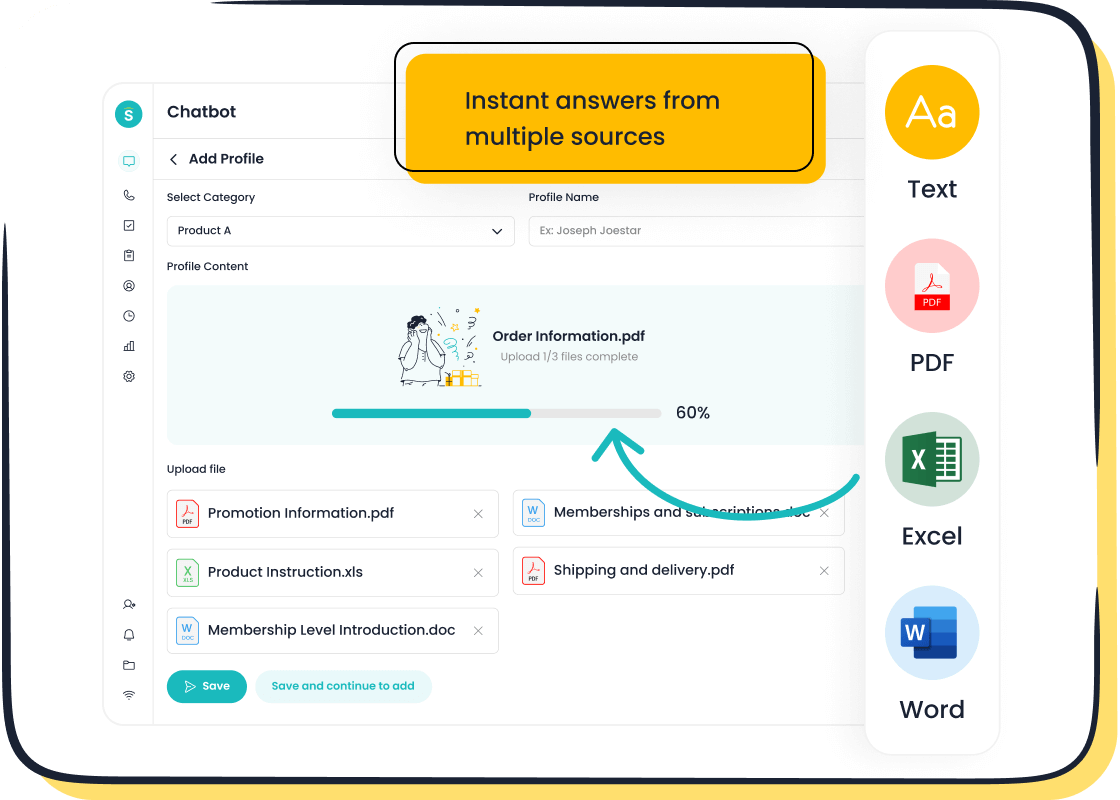
Sobot’s AI customer service chatbots excel in this area. They provide omnichannel support, enabling you to interact with customers across platforms like WhatsApp, SMS, and live chat. This synchronization ensures that your customers experience consistent and efficient service, regardless of their preferred communication method. By unifying interactions, Sobot helps businesses reduce operational inefficiencies and improve customer satisfaction.
Tip: Cross-platform synchronization not only enhances user experience but also reduces the time spent switching between tools, making your operations more streamlined.
Real-Time Language Translation and Accessibility Features
Real-time language translation is transforming how businesses communicate with global audiences. This feature allows you to interact with customers in their native language, breaking down language barriers and fostering inclusivity. For example, during a 2022 pilot program, Coursera saw a 47% increase in international student completion rates after implementing automated translation tools. Similarly, Microsoft Teams reported a 40% rise in participation during cross-border training sessions, thanks to real-time translation.
Accessibility features like speech-to-text and text-to-speech further enhance inclusivity. These tools empower users with hearing or visual impairments to engage with chatbots effectively. Sobot’s AI chatbot trends align with these advancements. Its multilingual capabilities enable seamless communication in over 50 languages, ensuring that your business can cater to a diverse audience. Additionally, the chatbot’s voice and text integration make it accessible to users with varying needs, enhancing both engagement and satisfaction.
By adopting AI customer service chatbots with real-time translation and accessibility features, businesses can expand their reach and create more inclusive experiences. These tools not only improve customer interactions but also demonstrate your commitment to serving a global and diverse audience.
Benefits of Enhanced Multimodal Interactions
Improved Accessibility for Diverse User Groups
Multimodal interactions make technology more inclusive by addressing the unique needs of diverse user groups. These systems combine text, voice, and visual inputs, ensuring that everyone, including individuals with disabilities, can engage effectively. For example, speech-to-text features help users with hearing impairments, while text-to-speech tools assist those with visual challenges.
Research highlights the importance of designing assistive technologies that consider a wide range of disabilities. By collecting data from diverse users, developers can create solutions that cater to specific needs. Future advancements in algorithmic transparency will also build trust, ensuring these tools remain effective and reliable.
Sobot’s AI-powered chatbots excel in accessibility. They offer multilingual support and integrate seamlessly across platforms like WhatsApp and SMS. This ensures that users from different backgrounds can interact with businesses effortlessly. Whether you’re navigating a website or using a mobile app, these chatbots provide consistent and accessible service.
Note: Accessibility isn’t just about compliance; it’s about creating equal opportunities for everyone to connect and communicate.
Increased Personalization Through AI and Data Insights
Personalization has become a cornerstone of modern customer experiences. AI-driven chatbots analyze your preferences, past interactions, and real-time data to deliver tailored solutions. This level of hyper-personalisation not only improves satisfaction but also drives sales by offering personalized recommendations.
Consider these statistics:
| Statistic | Value |
|-----------|-------|
| Increase in customer satisfaction | 20% |
| Increase in conversion rates | 15% |
| Companies using AI for customer experience | 80% |
| Customers expecting better personalization | 73% |
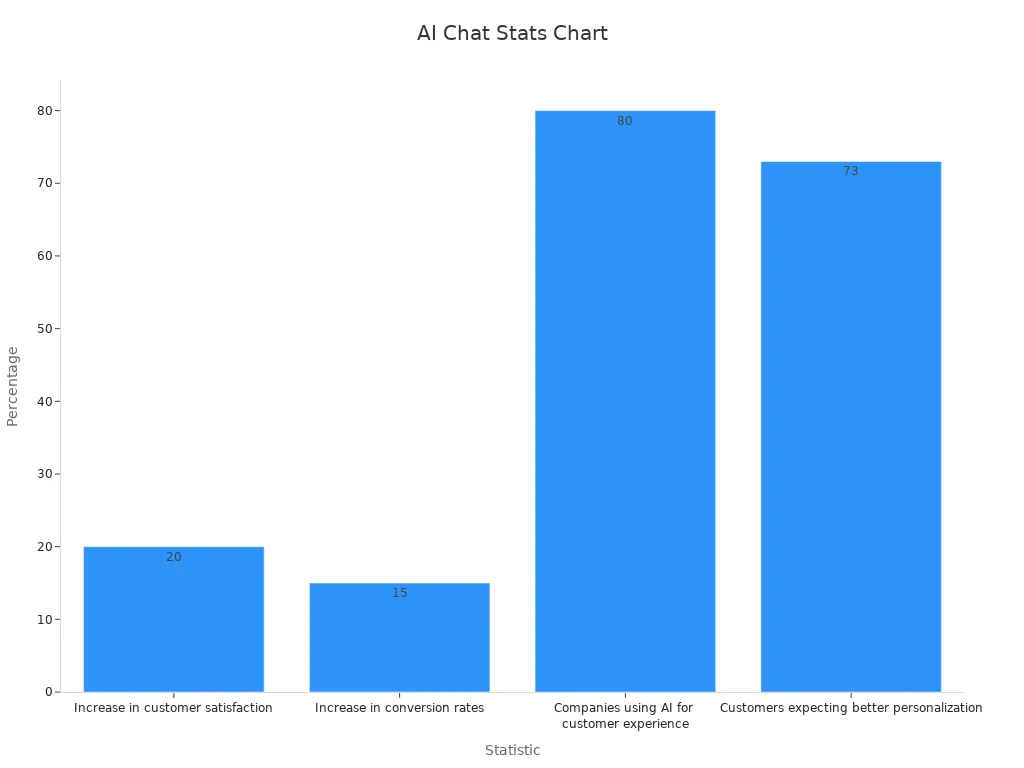
Sobot’s AI integration takes personalization to the next level. Its chatbots use conversational AI to understand your needs and provide human-like interactions. For instance, if you’re shopping online, the chatbot can recommend products based on your browsing history. This enhanced personalization not only improves your experience but also helps businesses increase conversions.
Tip: Personalized interactions make you feel valued, turning one-time customers into loyal advocates.
Enhanced User Engagement and Satisfaction
Multimodal communication systems significantly boost user engagement and satisfaction. By combining text, voice, and visuals, these systems create dynamic and interactive experiences. Personalized messaging and automated feedback loops further enhance your connection with brands, making interactions more meaningful.
Studies show that consistent cross-channel communication builds trust and improves retention rates. Dynamic feedback loops also contribute to long-term loyalty by addressing your concerns in real time. For example, a chatbot that remembers your preferences can provide faster and more accurate responses, saving you time and effort.
Sobot’s chatbots driving sales and engagement exemplify this trend. They offer human-like interactions that feel natural and intuitive, ensuring you stay engaged throughout your journey. Whether you’re seeking customer support or exploring new products, these chatbots deliver a seamless and satisfying experience.
Callout: Engaged users are more likely to return, making user satisfaction a key driver of business success.
Streamlined Customer Support and Faster Issue Resolution
Efficient customer support is the backbone of any successful business. When you encounter issues, you expect quick resolutions that save time and effort. Streamlined customer support systems, powered by AI customer service chatbots, are transforming how businesses meet these expectations. By automating initial responses and triaging queries, these systems reduce the workload on human agents and accelerate issue resolution.
Slow response times often lead to frustration and repeated support tickets for the same problem. This complicates the resolution process and increases costs. AI-powered ticketing systems address this challenge by prioritizing and categorizing inquiries. Companies using these systems have reported a 50% reduction in mean time to resolution (MTTR). For example, Sobot’s AI Chatbot operates 24/7, ensuring that your queries are addressed promptly, even during peak hours. This efficiency not only improves service quality but also reduces operational expenses.
Faster issue resolution also has financial benefits. Resolving problems at the first point of contact within 24 hours costs up to 170% less than those taking 48 hours. Imagine contacting a chatbot for assistance with a product return. Instead of waiting for a human agent, the chatbot provides instant guidance, saving you time and ensuring a smooth experience. Businesses benefit from reduced costs and higher customer satisfaction, creating a win-win scenario.
Consistency across communication channels further enhances your experience. Whether you reach out via WhatsApp, SMS, or live chat, AI customer service chatbots ensure seamless support. This unified approach builds trust and loyalty. When you receive quick and consistent resolutions, you feel valued, which strengthens your connection with the brand.

Sobot’s AI solutions exemplify this streamlined approach. Its chatbots integrate conversational AI to deliver human-like interactions, making your support experience more intuitive. By analyzing previous conversations, these chatbots provide personalized solutions tailored to your needs. This capability not only resolves issues faster but also enhances your overall satisfaction.
Callout: Streamlined customer support isn’t just about speed; it’s about creating a seamless and satisfying experience that keeps you coming back.
Industry Applications of Multimodal Chat Integrations

Healthcare: Virtual Assistants for Patient Support
Virtual assistants in healthcare are transforming how you access medical support. These chatbots assist physicians, nurses, and patients by providing text, speech, and audio-based interactions. For example, they can help you schedule appointments, remind you to take medication, or answer basic health-related questions. This reduces the workload on medical staff and ensures you receive timely assistance.
The market for virtual assistants in healthcare was valued at $320.7 million in 2022 and is expected to grow at a compound annual growth rate (CAGR) of 24.7% through 2030. These tools also offer significant cost savings, cutting expenses by up to 70% compared to traditional in-house staff.
| Evidence Type | Data |
|---|---|
| Cost Savings | Up to 70% savings compared to traditional in-house staff |
| Market Size | Valued at USD 320.7 million in 2022 |
| CAGR | Expected growth of 24.7% from 2023 to 2030 |

Sobot’s AI Chatbot supports healthcare providers by offering 24/7 availability and multilingual capabilities. Whether you need to manage patient inquiries or streamline administrative tasks, these chatbots enhance efficiency and improve patient satisfaction.
E-Commerce: Personalized Shopping Experiences
In e-commerce, personalized shopping experiences are key to keeping customers engaged. Multimodal AI enables you to describe your needs in natural language, making voice shopping more intuitive. For instance, you could ask a chatbot for "a red dress for a summer wedding," and it would provide tailored product suggestions.
Chatbots in e-commerce also interpret text, images, and even the tone of your voice. This creates emotionally attuned interactions that feel more human. By integrating multimodal AI, businesses can transform their customer support into intelligent assistants that understand your preferences.
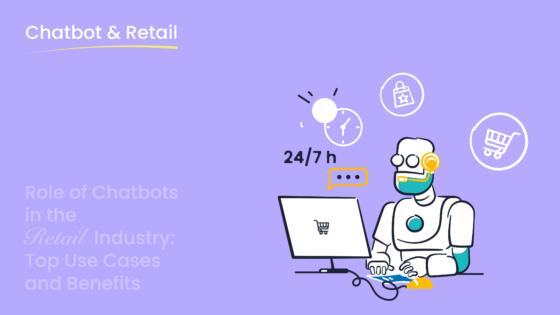
Sobot’s ecommerce chatbot integration takes this a step further. It combines text, voice, and visual inputs to deliver seamless shopping experiences. Whether you’re browsing products or seeking support, Sobot ensures your journey is smooth and personalized, helping businesses boost conversions and customer loyalty.
Education: Interactive Learning Platforms
Interactive learning platforms powered by multimodal interactions are reshaping education. These systems combine text, voice, and visuals to make complex concepts easier to understand. For example, large multimodal foundation models (LMFMs) adapt to your learning style, offering personalized lessons and creative engagement.
Studies show that multimodal systems improve collaboration and engagement. A recent study found that greater upper body movement during lessons correlates with deeper learning. Automated systems can now detect these movements to assess your engagement levels.
| Evidence Type | Description |
|---|---|
| Study Focus | Investigates multimodal interactions in collaborative learning environments. |
| Methodology | Employs triangulating and interleaving analytical approaches. |
| Key Findings | Greater variances in upper body movements correlate with deeper engagement in learning activities. |
| Implication | Automated detection of body movements can assess engagement effectively. |
Sobot’s AI solutions can support educational platforms by integrating conversational AI with multimodal features. This creates dynamic, interactive lessons that cater to diverse learning preferences, ensuring students like you stay engaged and motivated.
Customer Service: Omnichannel Support in Call Centers
Omnichannel support in call centers ensures you receive consistent and seamless service across multiple communication channels. Whether you prefer WhatsApp, SMS, email, or voice calls, omnichannel systems unify these platforms to provide a cohesive experience. This approach eliminates the frustration of repeating information when switching between channels, saving you time and effort.
Businesses that adopt omnichannel support see significant improvements in customer satisfaction. For example, 73% of customers expect brands to offer personalized experiences across all platforms. When you contact a call center, you want quick resolutions and consistent communication. AI customer service chatbots play a vital role in achieving this. These chatbots automate responses, triage queries, and provide instant solutions, reducing wait times and enhancing your experience.
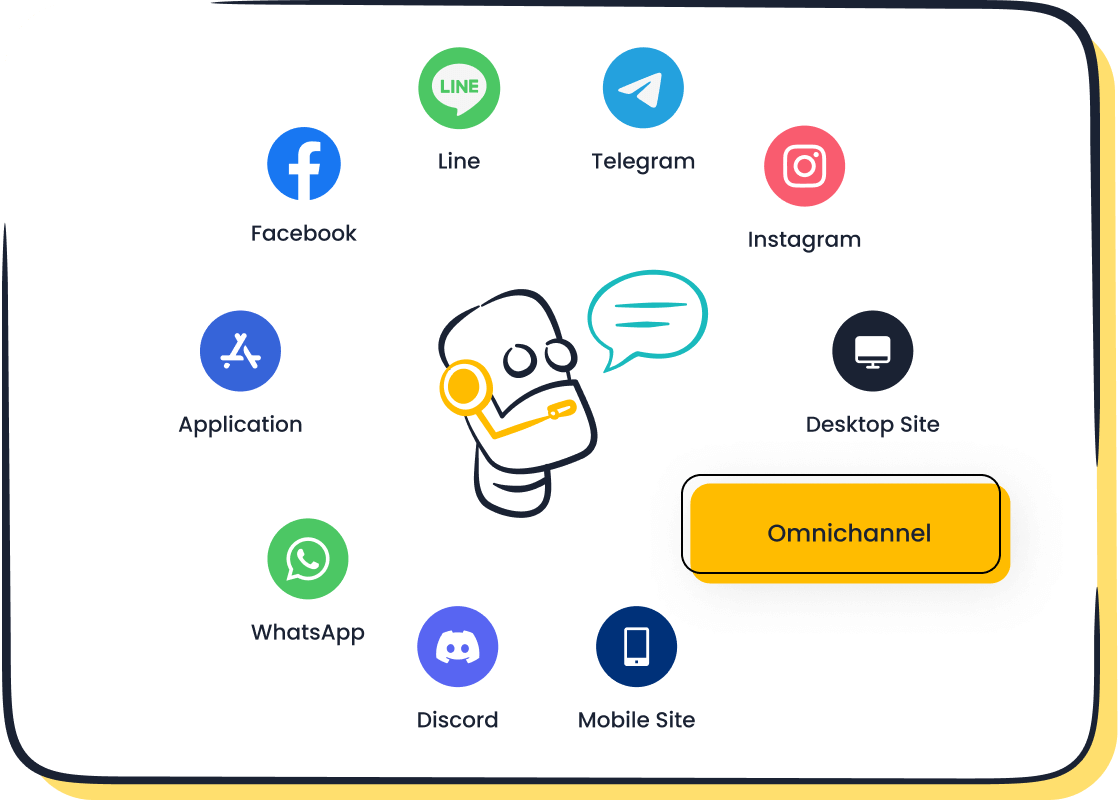
Sobot’s AI-powered solutions exemplify effective omnichannel support. Its chatbots integrate seamlessly with platforms like WhatsApp and SMS, ensuring you receive consistent service regardless of your preferred channel. By analyzing previous interactions, these chatbots deliver personalized responses tailored to your needs. This capability not only improves efficiency but also strengthens your connection with the brand.
Tip: Omnichannel support isn’t just about convenience; it’s about creating a unified experience that makes you feel valued and understood.
Financial Services: Streamlined Customer Interactions with Sobot AI Chatbot
Fintech AI-powered chatbots are transforming customer interactions in financial services. These chatbots automate routine tasks, such as account inquiries and transaction updates, allowing you to access information quickly and securely. Banks and financial institutions are increasingly adopting AI to enhance service delivery and reduce operational costs. According to EY, AI implementation in banking can boost productivity by 3% to 5% and save around $300 billion annually.

Sobot’s AI Chatbot stands out in this space by offering secure and efficient solutions. It complies with ISO standards and GDPR, ensuring your data remains protected. The chatbot operates across user-friendly channels, maximizing agent productivity and fostering stronger relationships with customers. For example, when you need assistance with a loan application, the chatbot provides instant guidance, saving you time and effort.
| Benefit | Description |
|---|---|
| Better Customer Experience | The chatbot enhances customer interactions, leading to improved satisfaction and loyalty. |
| Data Security | Sobot ensures compliance with ISO standards and GDPR, protecting customer data and privacy. |
| Boost Satisfaction | By using user-friendly channels, the chatbot maximizes agent productivity and fosters relationships. |
Banks leveraging Sobot’s AI solutions benefit from streamlined operations and improved customer satisfaction. By automating processes and providing personalized support, these chatbots help financial institutions build trust and loyalty.
Callout: Fintech AI-powered chatbots aren’t just tools; they’re transforming how you interact with financial services, making them faster, safer, and more accessible.
Future Outlook for Chat Integrations and Multimodal Interactions
Emerging Technologies Shaping the Future
The future of chat integrations is being shaped by groundbreaking technologies that promise to revolutionize how you interact with digital systems. Voice-powered conversational bots are becoming more prevalent, offering hands-free communication for greater convenience. Chatbots are also integrating with social media platforms, allowing businesses to engage with you where you spend most of your time.
Advancements in personalization and contextual understanding are enabling chatbots to deliver more tailored and meaningful interactions. For example, future chatbots will use emotional intelligence to create human-like conversations, making your experience more relatable. Integration with IoT devices is another exciting development. Imagine controlling your smart home devices through a simple chat interface.
| Emerging Technology | Description |
|---|---|
| Personalization | Chatbots will utilize user data and algorithms to tailor interactions, enhancing user engagement. |
| Human-Like Conversations | Future chatbots will incorporate empathy and emotional intelligence for more relatable interactions. |
| IoT Integration | Chatbots will connect with IoT devices, allowing users to control environments through conversation. |
| Voice Bots Expansion | Integration of chatbots into voice-activated systems will enhance conversational experiences. |
| Social Media Integration | Chatbots will be incorporated into social media platforms, expanding their reach and functionality. |
These technologies will redefine how businesses like Sobot deliver customer-centric solutions, ensuring you enjoy seamless and intuitive interactions.
Challenges in Implementation and Scalability
Despite the promise of these technologies, scaling chat integrations comes with challenges. Fidelity and adaptation remain critical as businesses must tailor solutions to meet diverse needs. Ensuring reach and acceptability for a wide audience is another hurdle. For example, chatbots must cater to users across different languages and cultural contexts.
| Domain | Description |
|---|---|
| Fidelity and Adaptation | Proposed changes to the intervention required for scale-up. |
| Reach and Acceptability | The likely reach and acceptability of the intervention for the target population. |
| Delivery Setting and Workforce | Define the setting within which the intervention is delivered as well as the delivery workforce. |
| Implementation Infrastructure | Implementation infrastructure is required for scale-up. |
| Sustainability | Longer-term outcomes of the scale-up and how, once scaled up, the intervention could be made sustainable. |
Sobot’s AI solutions address these challenges by offering scalable, multilingual chatbots that operate 24/7. These tools ensure businesses can meet growing demands while maintaining high-quality service.
Predictions for 2025 and Beyond
The future of chat integrations looks promising, with exciting predictions for the coming years. By 2026, over 30% of new applications will feature built-in autonomous agents. These agents will seamlessly integrate text, voice, images, and video, creating deeply personal and meaningful interactions.
In 2025, AI agents will exhibit improved emotional intelligence, enabling empathetic interactions in sectors like customer service and education. The market for emotional AI is also expected to grow from $19.5 billion in 2020 to $37.1 billion by 2026, reflecting an annual growth rate of 11.3%.
These advancements will empower businesses to deliver exceptional customer experiences. Sobot’s AI Chatbot, with its focus on personalization and contextual understanding, is well-positioned to lead this transformation. By adopting these innovations, you can expect faster, smarter, and more engaging interactions in the near future.
Chat integrations are revolutionizing multimodal interactions, enabling smarter and more intuitive communication. These systems combine text, visuals, and audio to improve accuracy, accessibility, and engagement. For example, natural language processing enhances expressiveness, while image analysis generates better contextual descriptions.
| Application Area | Key Impact | Example Use Case |
|---|---|---|
| Natural Language Processing | Enhanced accuracy and expressiveness through multimodal integration. | Text generation with visual context. |
| Image Analysis | Improved contextual understanding and description generation. | Image captioning using text and visuals. |
| Audio Processing | Better sentiment analysis and dialog systems through integrated data. | Dialog systems incorporating audio cues. |
Sobot’s AI Chatbot exemplifies this transformation. It delivers personalized, multilingual support across platforms like WhatsApp and SMS, ensuring seamless interactions. Staying ahead of trends like AR integration and IoT connectivity will help businesses like yours remain competitive in customer-centric industries.
Tip: Embracing these innovations ensures you provide accessible, engaging, and future-ready experiences for your audience.
FAQ
What are chat integrations, and why are they important?
Chat integrations connect communication tools like live chat, chatbots, and messaging apps into a unified system. They streamline interactions, making customer support faster and more efficient. For example, Sobot’s AI Chatbot integrates with WhatsApp and SMS, ensuring seamless communication across platforms.
How do multimodal interactions improve user experiences?
Multimodal interactions combine text, voice, and visuals to create intuitive communication. They cater to diverse preferences and needs. For instance, Sobot’s AI Chatbot uses multimodal capabilities to deliver personalized support, enhancing satisfaction and engagement.
Can Sobot’s AI Chatbot handle multiple languages?
Yes, Sobot’s AI Chatbot supports over 50 languages. This feature ensures businesses can communicate effectively with global audiences, breaking language barriers and fostering inclusivity.
How do chat integrations reduce operational costs?
Chat integrations automate repetitive tasks, reducing the need for human agents. Sobot’s AI Chatbot operates 24/7, triaging queries and saving up to 50% on additional agent costs. This efficiency lowers expenses while maintaining high-quality service.
What industries benefit most from multimodal chat integrations?
Industries like e-commerce, healthcare, and financial services see significant benefits. For example, Sobot’s AI Chatbot helps e-commerce businesses provide personalized shopping experiences, while in healthcare, it streamlines patient support with 24/7 availability.
Tip: Explore Sobot’s solutions to see how chat integrations can transform your business. Learn more here.
See Also
10 Key Advantages of Integrating Chatbots into Websites
Best Tools for Incorporating Social Media Chat on Websites
How WhatsApp Chat Enhances Engagement on Your Website
